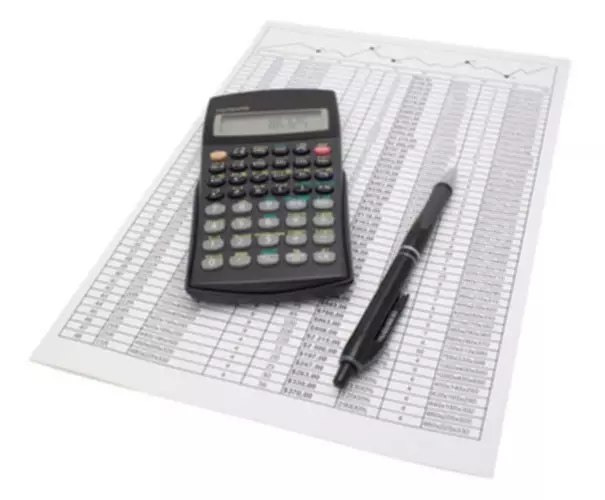Content

Working capital consists of a company’s cash flow as well as its assets. The asset turnover ratio is a financial measure of how efficiently a company utilizes its assets to produce sales revenues. First, it assumes that additional sales are good, when in reality the true measure of performance is the ability to generate a profit from sales. Thus, a high turnover ratio does not necessarily result in more profits. Second, the ratio is only useful in the more capital-intensive industries, usually involving the production of goods. A services industry typically has a far smaller asset base, which makes the ratio less relevant.

On the other hand, lower ratios highlight that the company might deal with management or production issues. Net Fixed AssetsNet Fixed Assets is a financial metric used to calculate the overall value of a firm’s fixed assets. You can calculate it by deducting the total depreciation or liabilities from the total amount paid for all the fixed assets.
Limitations of Using the Asset Turnover Ratio
Intangible AssetsIntangible Assets are the identifiable assets which do not have a physical existence, i.e., you can’t touch them, like goodwill, asset turnover ratio patents, copyrights, & franchise etc. They are considered as long-term or long-living assets as the Company utilizes them for over a year.
- The asset turnover ratio can be used as an indicator of the efficiency with which a company is using its assets to generate revenue.
- This ratio is extremely important to creditors and investors since it gives a picture of how efficiently the company is able to use its assets to generate of sales.
- Besides his extensive derivative trading expertise, Adam is an expert in economics and behavioral finance.
- We would say that P&G has to improve its asset utilization to increase revenue generation through assets.
As a financial and activity ratio, and as part of DuPont analysis, asset turnover is a part of company fundamental analysis. While the asset turnover ratio considers average total assets in the denominator, the fixed asset turnover ratio looks at only fixed assets. The fixed asset turnover ratio is, in general, used by analysts to measure operating performance. This efficiency ratio compares net sales to fixed assets and measures a company’s ability to generate net sales from property, plant, and equipment (PP&E). A higher fixed asset turnover ratio indicates that a company has more effectively utilized its investment in fixed assets to generate revenue. The asset turnover ratio measures the efficiency of a company’s assets in generating revenue or sales.
Case Management
Sally’s Tech Company is a tech start up company that manufactures a new tablet computer. Sally is currently looking for new investors and has a meeting with an angel investor. The investor wants to know how well Sally uses her assets to produce sales, so he asks for her financial statements. Average total assets are usually calculated by adding the beginning and ending total asset balances together and dividing by two.
- In other words, every $1 in assets generates 25 cents in net sales revenue.
- Depreciation is the allocation of the cost of a fixed asset, which is spread out—or expensed—each year throughout the asset’s useful life.
- There are a couple of things to keep in mind when you calculate your asset turnover ratio.
- However, experienced investors avoid relying on a single, one-year reading of the ratio as it can fluctuate.
In other words, Sally’s start up in not very efficient with its use of assets. Net sales are the amount of revenue generated after deducting sales returns, sales discounts, and sales allowances.
How to Know if a Company Is a Worthwhile Investment
It’s important to note that asset turnover ratio can vary widely between different industries. For example, retail businesses tend to have small asset bases but much higher sales volumes, so they’re likely to have a much higher asset turnover ratio.
- It is possible that a company’s asset turnover ratio in any single year differs substantially from previous or subsequent years.
- This gives us $50,000 that we divide by two to get the year’s average.
- Even with accounting software, you’ll likely calculate the ratio separately, since very few small business accounting programs can create accounting ratios.
- The fixed asset turnover ratio is helpful for companies with high-value investments in assets.
- The total asset turnover ratio is a valuable tool that can help you determine how well you are using your assets.
- What makes the asset turnover ratio of utmost importance is that it gives creditors and investors a general idea regarding how well a company is managed for producing sales and products.
While there is always the option of utilizing a more in-depth, weighted average calculation, this isn’t mandatory. The asset turnover ratio is one of the ratios that measure the efficiency of a company by finding the amount of revenue generated from its assets. Calculate both companies’ fixed assets turnover ratio based on the above information. Also, compare and determine which company is more efficient in using its fixed assets. To calculate the asset turnover ratio, you need to find out the total revenue and then divide it with total assets .
The asset turnover ratio measures is an efficiency ratio that measures how profitably a company uses its assets to produce sales. The asset turnover ratio measures the value of a company’s sales or revenuesrelative to the value of its assets. The asset turnover ratio can be used as an indicator https://www.bookstime.com/ of the efficiency with which a company is using its assets to generate revenue. There are many ways to judge the financial health of companies in a specific market. Investors and business-owners use these tools to judge the strengths of companies as well as the areas where they may be lacking.
Fixed Asset Turnover Ratio Explained With Examples – Investopedia
Fixed Asset Turnover Ratio Explained With Examples.
Posted: Tue, 28 Mar 2017 11:14:38 GMT [source]
Its total assets were $1 billion at the beginning of the year and $2 billion at the end. If you find that your ratio is lower than others in the industry, this means it’s time to identify where you can improve.